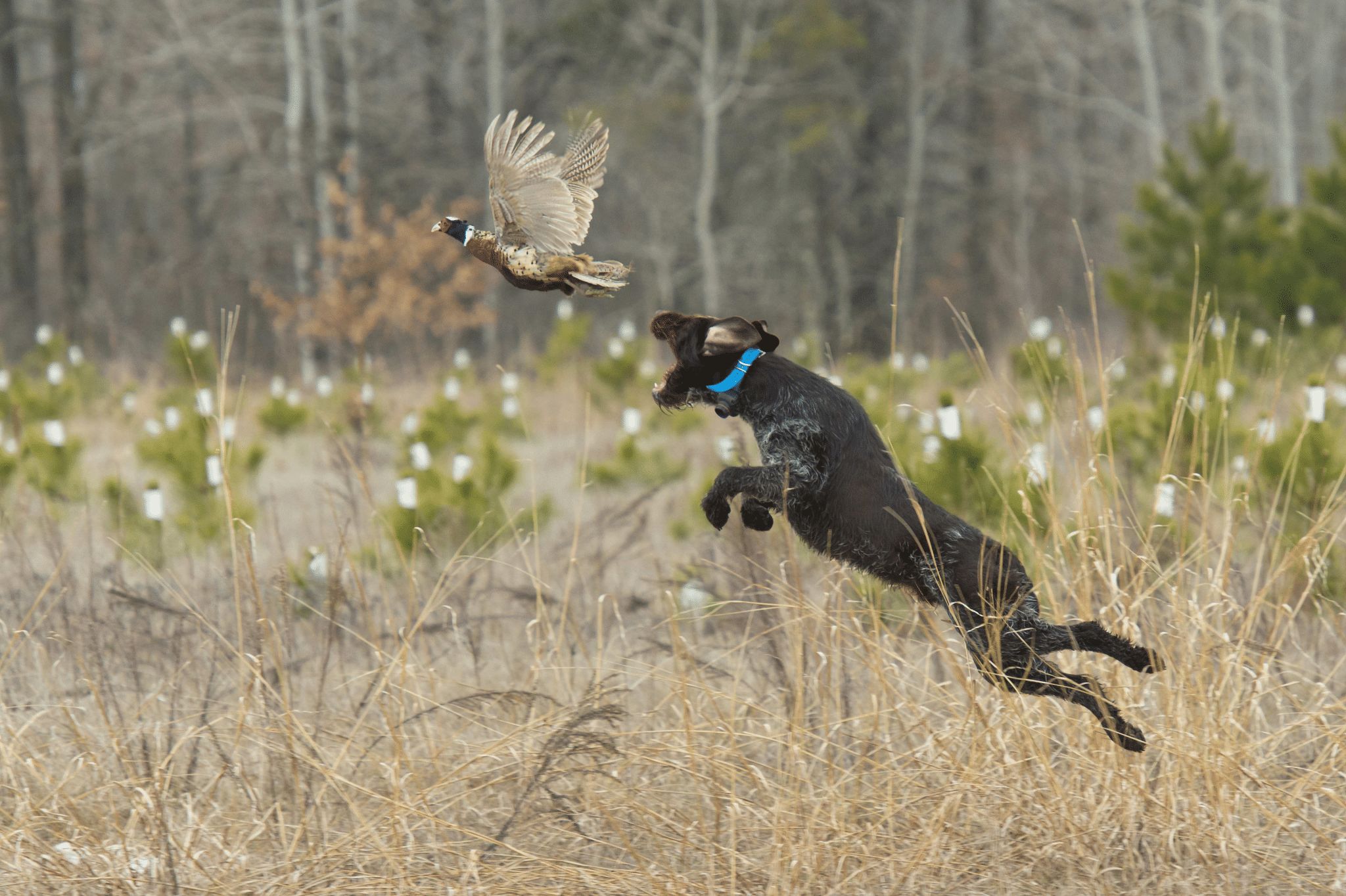Upland Game Drills

Upland Game Drills
If we desire to improve our skills, we need to be ready to put in the work. Rather than just showing up to the field opening day of upland season, hoping our dog is just a natural rockstar, we can deploy some simple strategies. If we want our dogs to feel comfortable hunting, finding and retrieving birds, we have to help them be comfortable in the field. The foundation we start in our backyard will allow us to build the solid hunting partner we want in the field. When we build a repletion of “wins” in our backyard, we can add some distractions and consider other training locations.
Recall
When I take my pups out to the bathroom, I build in intentional time to walk around the yard with them. As they get more comfortable, they start to wander away from me. I then recall them. The reward for their obedience is praise. The first couple of days I have them, I only do a few recalls during potty breaks. Over time, I increase the amount of time we are in the yard, how many times I recall them and how much distance I allow between the two of us.
Quartering
Teaching our dogs to quarter means teaching them where we want them to go, and how we want them to work the field. We’re helping out dogs know we want them to work a specific pattern in front of us. I use in my backyard when I’m teaching my pups, walking a v pattern from one side of my yard to the other. If my pup “gets it” and works the pattern with me, great. If they don’t, I simply call them. To help the process stick, I’ll call their name when I change directions, even if they are working the pattern with me.
Heelwork
Jeremy Moore with Dog Bone Hunter says, “If we can’t get our dog to obey us when they are three inches from our side, how do we expect them to obey us when they are running yards ahead of us in the field?” One of the best ways to build this kind of obedience is through heelwork. With my pups, heelwork starts with them wearing a flat collar connected to a lead, doing short right-hand turns by my side, on a straight line in my backyard. The goal is to make incremental changes that get us to the point where my dog can heel off the lead, anywhere we are, with any distractions in front of us.
Hunt/Find Commands
This is a simple drill that helps our dogs learn how to use their nose in the field. When I start this drill with a pup, I do a couple of different drills. During one of the drills, I’ll toss some kibble in a smaller, designated area of my yard (I do this before I bring my pup outside). After I have the kibble spread in the yard, I walk the pup over to the area and start giving my preferred command. I repeatedly say the command as the pup searches for the kibble. They typically don’t lose interest until they are certain the kibble is gone.
Retrieves
No matter if we own a pointer or flusher, we want our pup to retrieve. I start retrieving drills in my house. I have a couple of places I can use that allow me to toss a rolled-up sock, a bumper or a ball for my pup to go retrieve. Once they get to the object, they only have two options. The first option, and preference, is for them to run back to me with the object. The other option is for them to lie down and play with the object. What they can’t do in either option is run away from me. That is the purpose of the hallway approach.
Birds
Again, we want our pup to have bird drive. The way I introduce my dogs to birds is during retrieves. Depending on the pup’s desire to chew, I might start with a wing or a ball/dummy that is covered in scent or a dummy that I’ve taped a wing or two on. As my pup progresses in their bird work, I introduce them to a frozen bird, then a thawed bird, and later to a fresh kill (when I have access to a bird). This progression reduces my dog’s chance of being turned off to birds because of getting spurred or hit by a wing before they were comfortable. As my pups advance, I start introducing them to planted birds that they’ll either flush or point depending on their breed.
Cover & Terrain
One of the things I think we overlook when prepping our dogs to hunt upland is getting them comfortable working in various kinds of cover and terrain. Helping our dogs work through the heights and densities of grass comes with training in various types of grass. It’s important that we look at training grounds in a progressive frame of mind. We should start with shorter, less dense grass and work our way into taller, more dense grass as our dogs “win” in the cover we’re currently training in. Something else we need to consider is the other types of cover and terrain we plan to hunt with our dogs, like woodlands and wide-open country. If we never train in those kinds of spaces, we’re setting our dog and ourselves up for failure and disappointment.
If you have an older dog rather than a puppy, these basic foundation drills still apply to your dog. The only thing that changes is the intensity of the drill. The intensity level exists within the number of distractions in the drill and the “newness” within the drill (location, distance, time, etc.). No matter your dog’s age, your goal should be for your dog to increase and fine-tune their skills with obedience.
by Kyle Dana
July 2023


